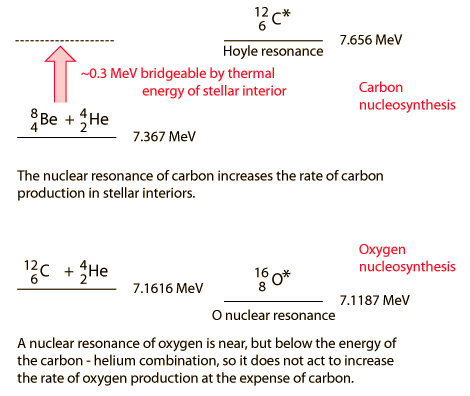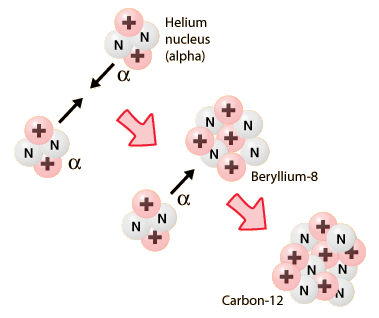The Hoyle Resonance
Around 1950, astronomer Fred Hoyle was working on the modeling of stellar nucleosynthesis and considered carbon synthesis in the light of the observed carbon abundance in the stars. Carbon could be formed by the fusion of three alpha particles, but the probability is relatively so low that this would be too slow to explain the observed carbon abundance. The formation of 8Be from two alpha particles is energetically favorable since they have almost the same energy, and the subsequent fusion with another alpha particle would create a 12C nucleus.
42He + 42He -> 84Be -0.092 MeV
84Be + 42He -> 126C + 2γ (+7.367 MeV)
When the production of carbon by this process was modeled, it still seemed to be too slow to account for the observed carbon abundance, and this led Hoyle to propose that carbon had a nuclear resonance in the neighborhood of 7.7 MeV, even though none had been observed at that time. Hoyle, et al. did discover a resonance at 7.65 MeV which brought the modeled production rate into agreement with carbon observations.

F. Hoyle, D. N. F. Dunbar, W. A. Wensel, W. Whaling, Phys. Rev. 92, 649 (1953).
|
Index
Nuclear fusion in stars
Reference
Barrow & Tipler
Ch 4 |

